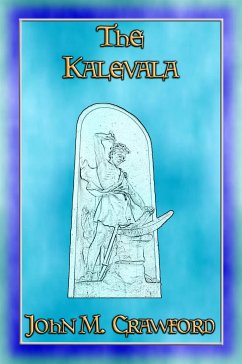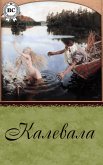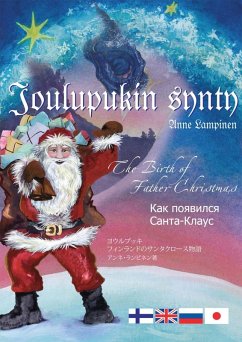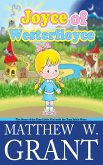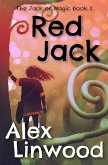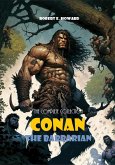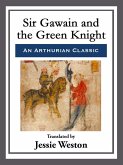THE KALEVALA – now with improved formatting and increased font size plus a list and descriptions of the main characters.
The Kalevala is a 19th-century work of epic poetry compiled by Elias Lönnrot from Karelian and Finnish oral folklore and mythology he collected on his journeys as a rural doctor. The central plot of the epic traces the journeys of the bardic hero-shaman Väinämöinen in his quest for a wife, together with the theft of a powerfully magical talisman called the Sampo.
The Sampo is a pivotal element of the whole work. Many actions and their consequences are caused by the Sampo itself or a character's interaction with the Sampo. It is described as a magical talisman or device that brings its possessor great fortune and prosperity, but its precise nature has been the subject of debate to the present day.
The Kalevala is regarded as the national epic of Karelia and Finland and is one of the most significant works of Finnish literature. The Kalevala was instrumental in the development of the Finnish national identity and the intensification of Finland's language strife that ultimately led to Finland's independence from Russia in 1917.
The Kalevala begins with the traditional Finnish creation myth, leading into stories of the creation of the earth, plants, creatures, and the sky. Creation, healing, combat and internal story telling are often accomplished by the character(s) involved singing of their exploits or desires. Many parts of the stories involve a character hunting or requesting lyrics (spells) to acquire some skill, such as boat-building or the mastery of iron making. As well as magical spell casting and singing, there are many stories of lust, romance, kidnapping and seduction. The protagonists of the stories often have to accomplish feats that are unreasonable or impossible which they often fail to achieve, leading to tragedy and humiliation.
===============
KEYWORDS/TAGS:
Kalevala, Finland, Epic Poem, fantasy, fiction, magic, supernatural, unexplained, enchanting, enchantment, talisman, Birth Of, Wainamoinen, Rune, Wainamoinens Sowing, Youkahainen, Fate Of Aino, Lamentation, Haplfss Journey, Rescue, Maiden Of The Rainbow, Origin Of Iron, Ilmarinen, Forges The Sampo, Lemminkainen, Lament, Kyllikki, Broken Vow, Second Wooing, Death, Lemminkainens Restoration, Boat-Building, Find, Lost Word, Rival Suitors, Brewing Of Beer, Wedding-Feast, Osmotar, Bride-Adviser, Farewell, Wedding-Songs, Origin Of, Serpent, Unwelcome Guest, Mother's Counsel, Isle Of Refuge, Frost-Fiend, Kullerwoinen, Son Of Evil, Kullervo, Sheperd, shepherd, Cheat Cake, Tribe-Folk, Evil Deeds, Victory, Death, Bride Of Gold, Fruitless Wooing, Sailing, Harp, Harp-Songs, Capture, Sampo, magical device, lost Sampo, Sea, Second Harp, Nine Diseases, Otso, Honey-Eater, Louhi, Steal, Sun, Moon, Fire, Capture Of The Fire-Fish, Restoration, Sun And Moon, Mariatta, Mary, Wainamoinen's Departure, Creation, healing, combat, hunting, songs, skaldic, boat building, forge, iron monger, forging, spells, magical spell, casting, mastery,
The Kalevala is a 19th-century work of epic poetry compiled by Elias Lönnrot from Karelian and Finnish oral folklore and mythology he collected on his journeys as a rural doctor. The central plot of the epic traces the journeys of the bardic hero-shaman Väinämöinen in his quest for a wife, together with the theft of a powerfully magical talisman called the Sampo.
The Sampo is a pivotal element of the whole work. Many actions and their consequences are caused by the Sampo itself or a character's interaction with the Sampo. It is described as a magical talisman or device that brings its possessor great fortune and prosperity, but its precise nature has been the subject of debate to the present day.
The Kalevala is regarded as the national epic of Karelia and Finland and is one of the most significant works of Finnish literature. The Kalevala was instrumental in the development of the Finnish national identity and the intensification of Finland's language strife that ultimately led to Finland's independence from Russia in 1917.
The Kalevala begins with the traditional Finnish creation myth, leading into stories of the creation of the earth, plants, creatures, and the sky. Creation, healing, combat and internal story telling are often accomplished by the character(s) involved singing of their exploits or desires. Many parts of the stories involve a character hunting or requesting lyrics (spells) to acquire some skill, such as boat-building or the mastery of iron making. As well as magical spell casting and singing, there are many stories of lust, romance, kidnapping and seduction. The protagonists of the stories often have to accomplish feats that are unreasonable or impossible which they often fail to achieve, leading to tragedy and humiliation.
===============
KEYWORDS/TAGS:
Kalevala, Finland, Epic Poem, fantasy, fiction, magic, supernatural, unexplained, enchanting, enchantment, talisman, Birth Of, Wainamoinen, Rune, Wainamoinens Sowing, Youkahainen, Fate Of Aino, Lamentation, Haplfss Journey, Rescue, Maiden Of The Rainbow, Origin Of Iron, Ilmarinen, Forges The Sampo, Lemminkainen, Lament, Kyllikki, Broken Vow, Second Wooing, Death, Lemminkainens Restoration, Boat-Building, Find, Lost Word, Rival Suitors, Brewing Of Beer, Wedding-Feast, Osmotar, Bride-Adviser, Farewell, Wedding-Songs, Origin Of, Serpent, Unwelcome Guest, Mother's Counsel, Isle Of Refuge, Frost-Fiend, Kullerwoinen, Son Of Evil, Kullervo, Sheperd, shepherd, Cheat Cake, Tribe-Folk, Evil Deeds, Victory, Death, Bride Of Gold, Fruitless Wooing, Sailing, Harp, Harp-Songs, Capture, Sampo, magical device, lost Sampo, Sea, Second Harp, Nine Diseases, Otso, Honey-Eater, Louhi, Steal, Sun, Moon, Fire, Capture Of The Fire-Fish, Restoration, Sun And Moon, Mariatta, Mary, Wainamoinen's Departure, Creation, healing, combat, hunting, songs, skaldic, boat building, forge, iron monger, forging, spells, magical spell, casting, mastery,

